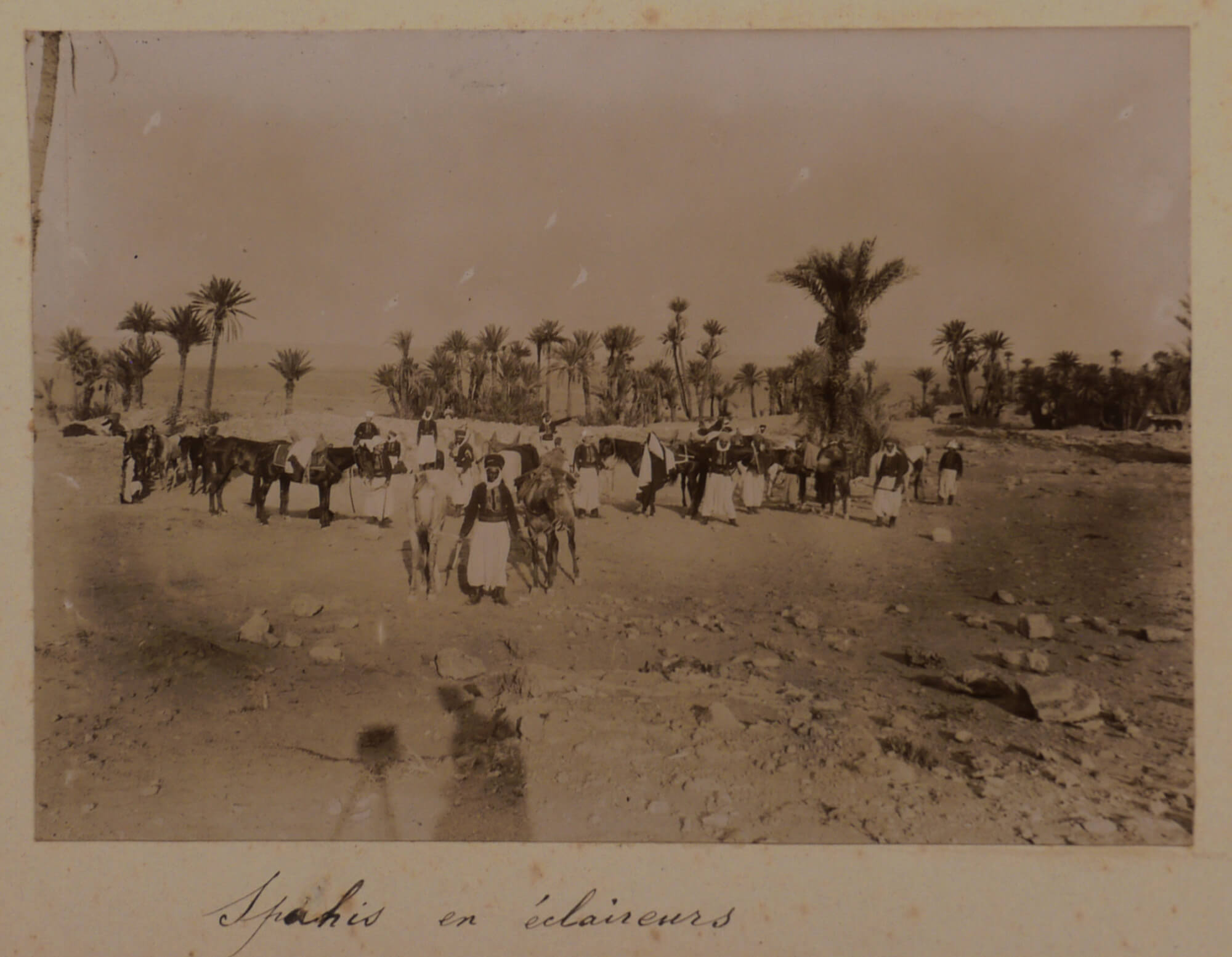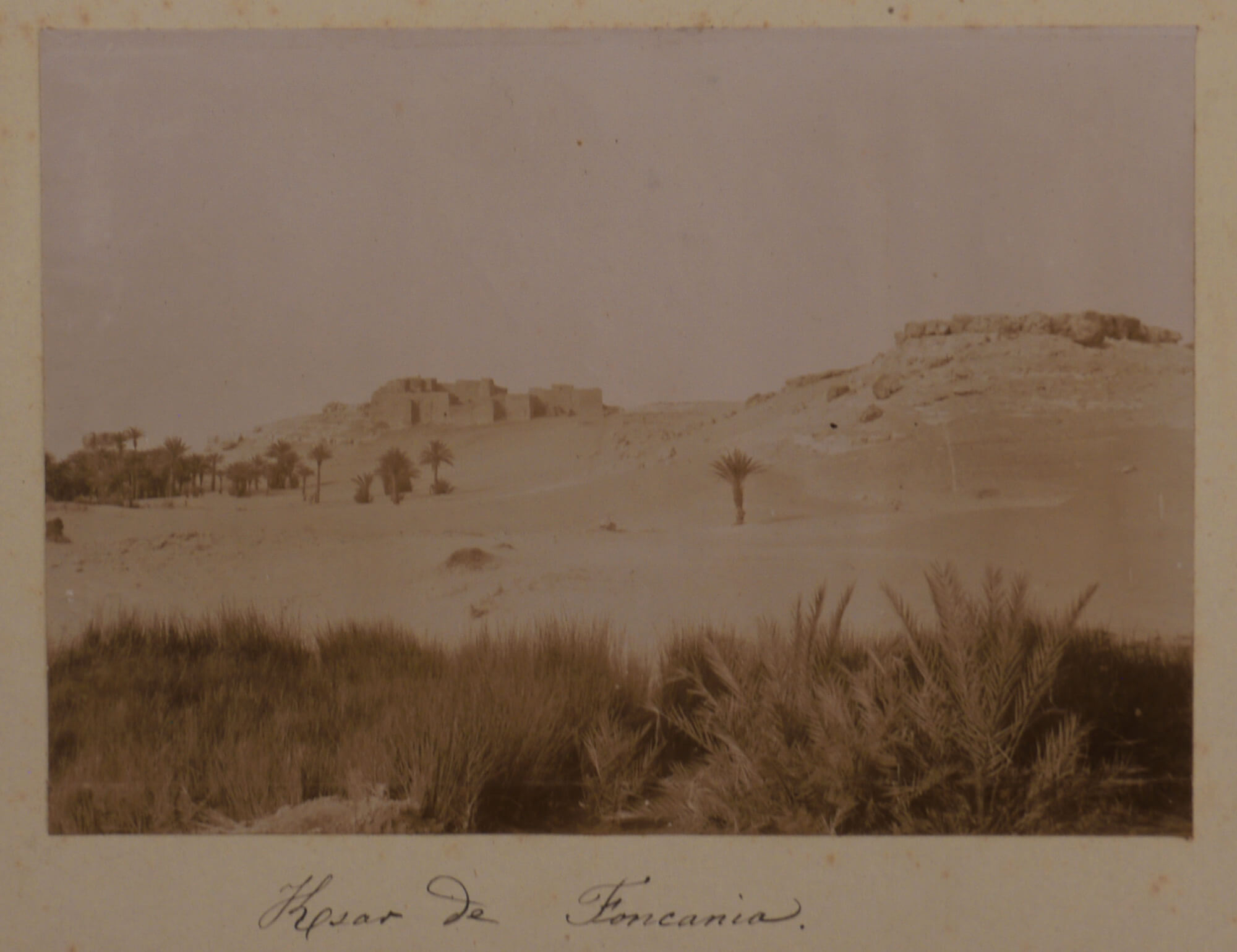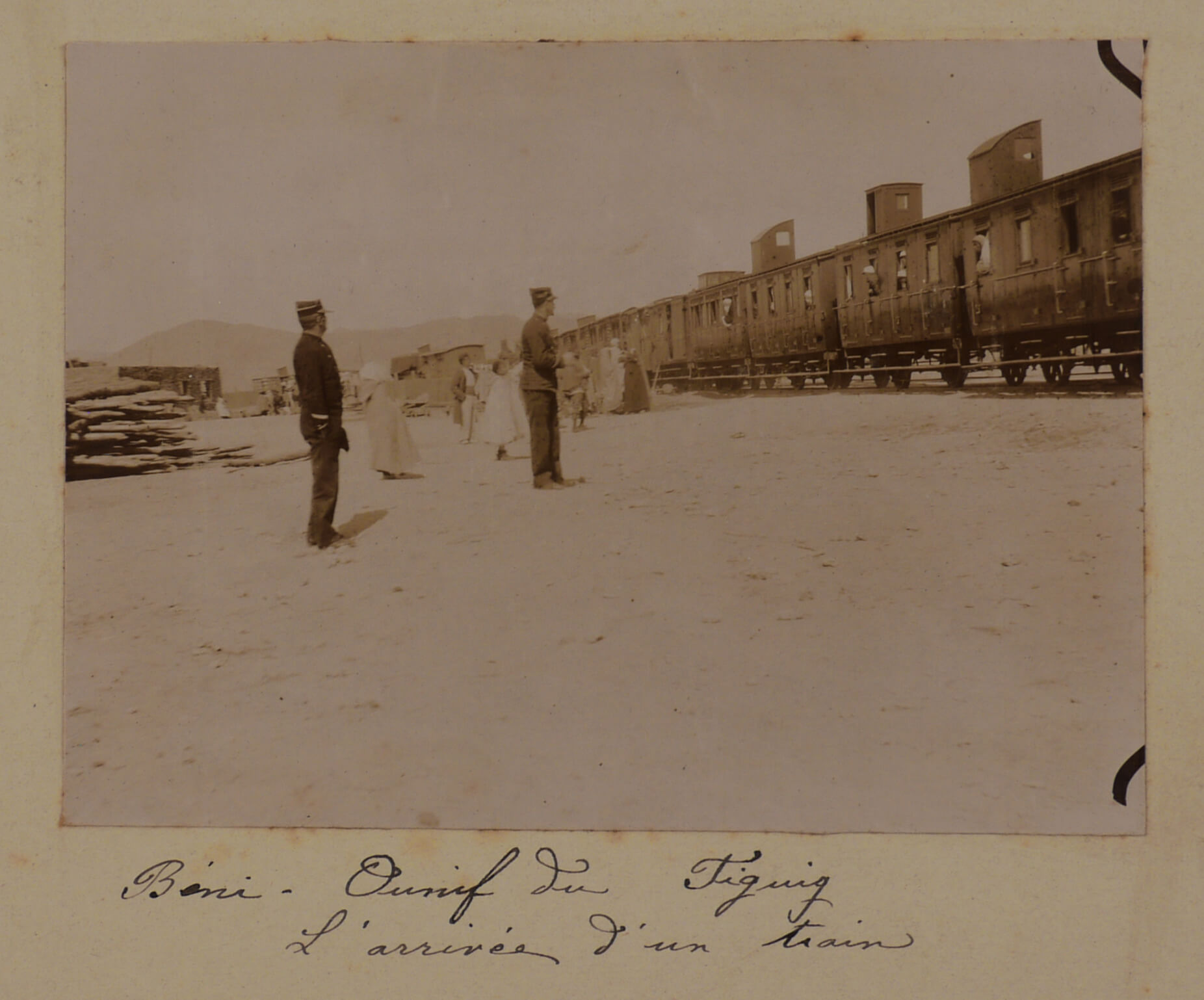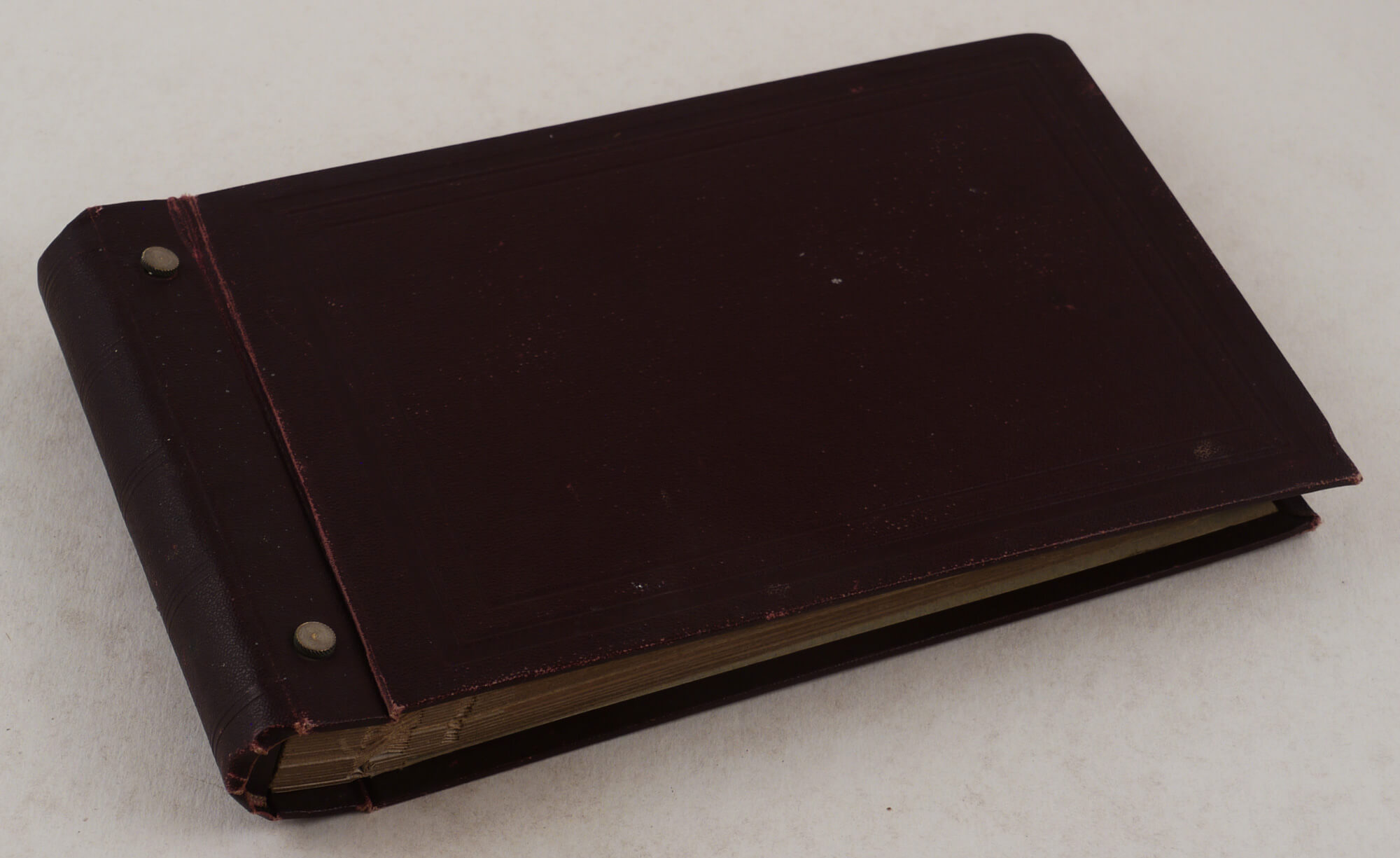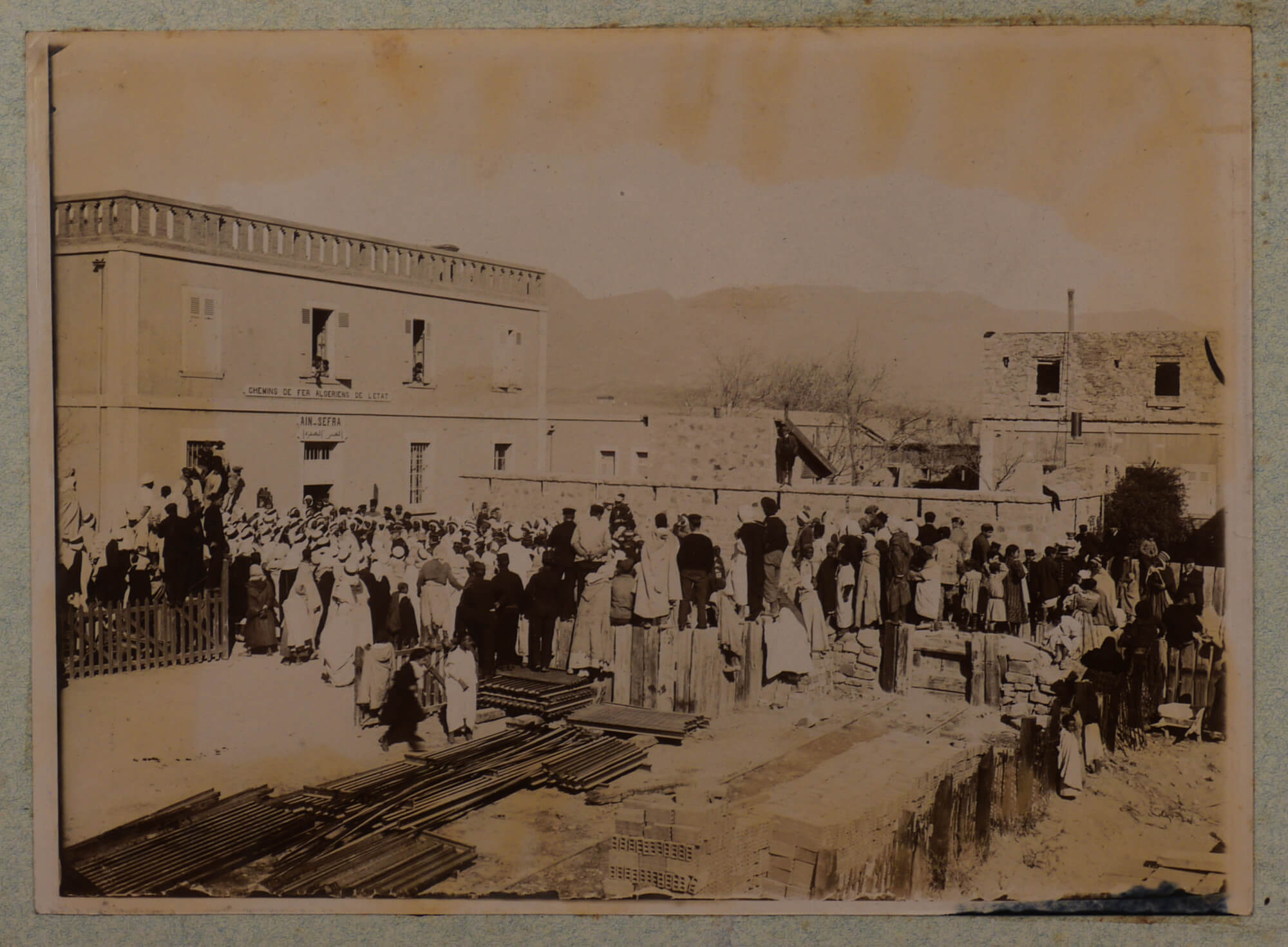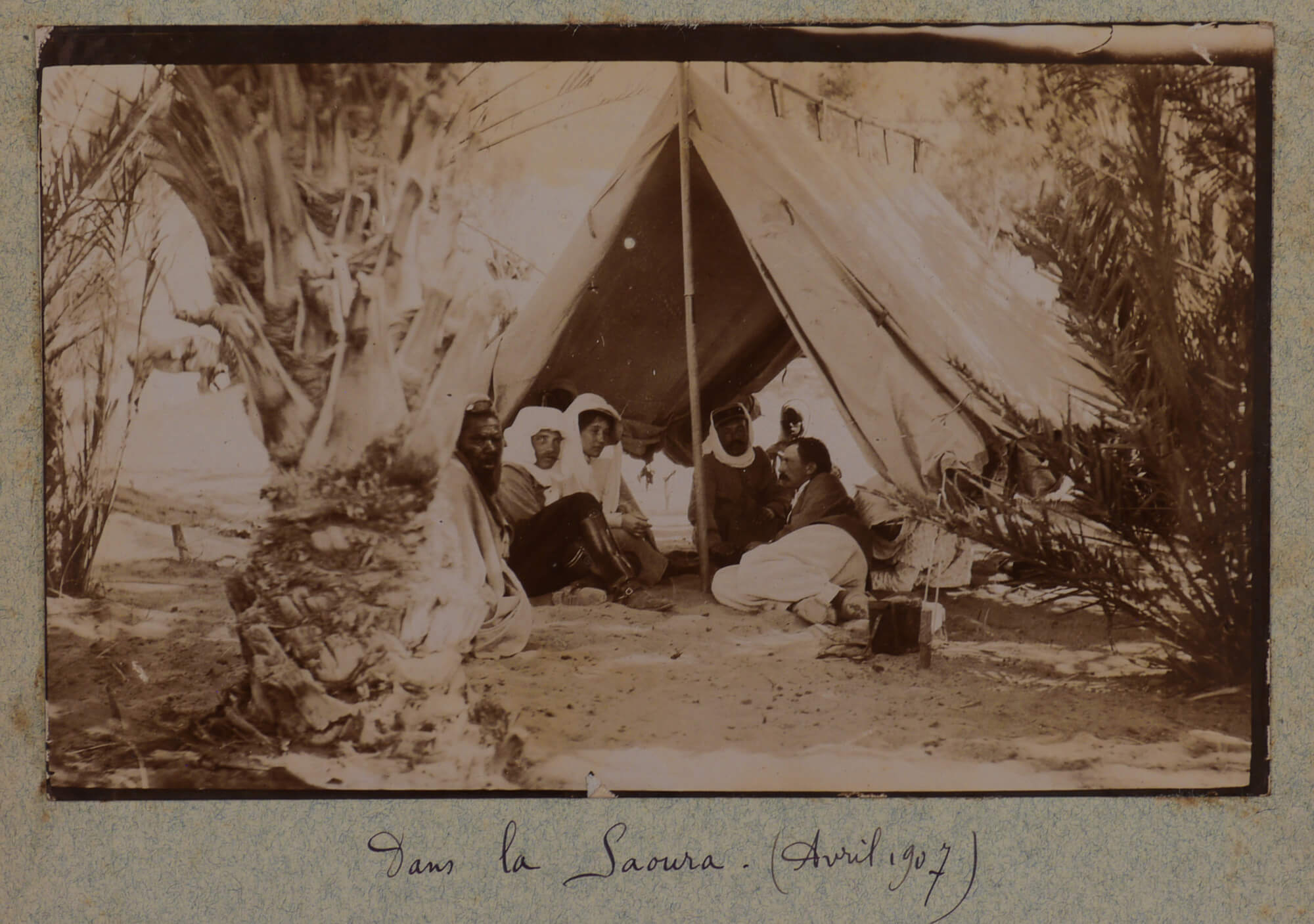












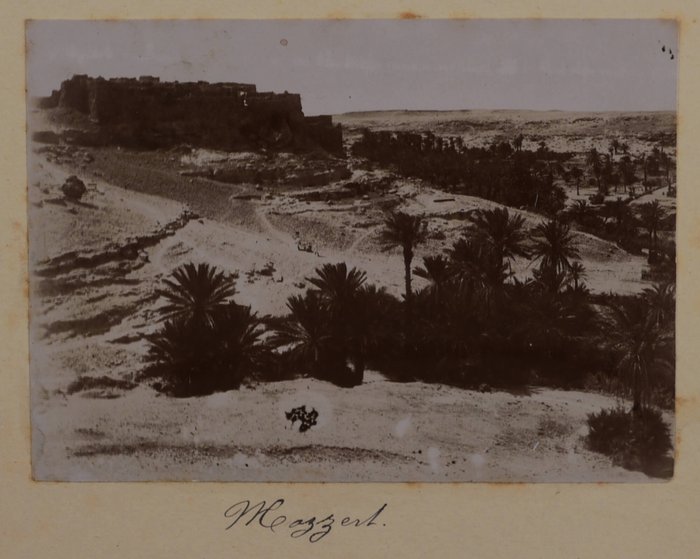







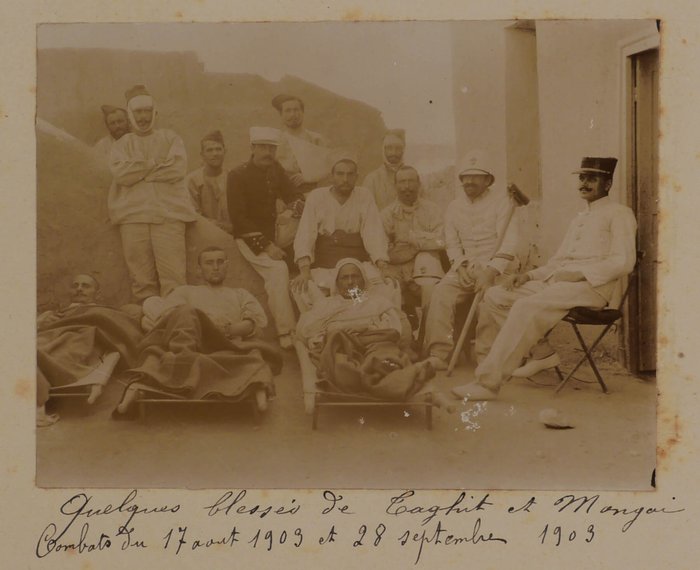


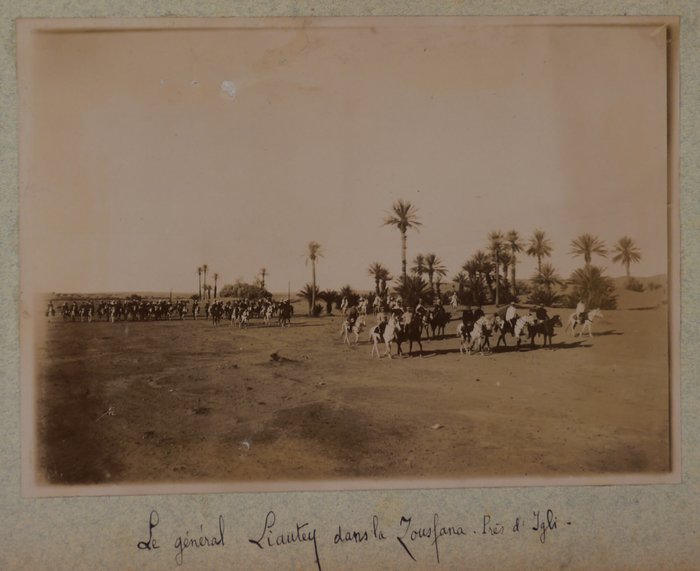

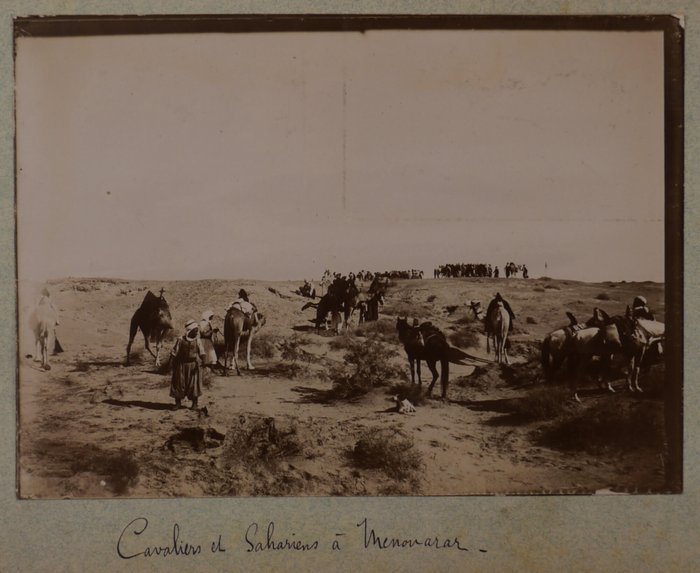







#PA39
Ca. 1903-7
Two oblong Quarto albums (ca. 19x29 and 19x26 cm). 22 and 50 (33 blank) card stock leaves. With 128 mounted gelatin silver photographs, including one two-part panorama ca. 10,5x23 cm (4 ¼ x 9 in), and thirty-one larger photos from ca. 13x18 cm (5x7 in) to ca. 11,5x16,5 cm (4 ½ x 6 ½ in); the rest of the photos are from ca. 9x14,5 cm (3 ½ x 5 ½ in) to ca. 7,5x10,5 cm (3x4 in). About a hundred photos with period ink captions on the mounts or on the images (some also with dates). With a loosely inserted gelatin silver photo ca. 12x17 cm (4 ¾ x 6 ¾ in), period ink caption on verso. Period maroon full cloth hardcover albums. Binding bumped on corners and weak on hinges, several leaves partly detached from the stub, a couple of images mildly faded, but overall two very good albums of interesting images.
Historically significant rare photographs of the French military advance and presence in the Oued (river) Saoura and Qued Zouzfana valleys (modern-day Béchar province in southwestern Algeria) during and shortly after the South-Oranese Campaign (ca. 1903-1907). The main goal of the campaign was to subdue the native tribes living on the western border of the Grand Erg Occidental (the Western Sand Sea) and to provide safety for the growing French settlements and the new Méchéria-Béchar railway which was ultimately to connect French Algeria to French Sudan. In the course of the campaign, the vast territories on the poorly-defined Algerian-Moroccan border in western Sahara which were traditionally under Moroccan influence became part of Algeria. This territorial shift became the main cause of the Sand War between independent Morocco and Algeria in 1963-64.
The album’s compiler was a French officer who served in the Oued Saoura region during the South-Oranese Campaign and shortly after it. The album includes interesting views of local towns and French military forts, including Tahgit (general views, a view from the east, the arrival of a convoy, a nomad camp, Oued Zousfana and palm groves), Béni Abbès (interior and exterior of the French fort, panoramic view of Béni Abbès oasis, native Ksar de Béni Abbès, etc.), “Ksar de Mazer” (Mazzer), “Ksar de Foncania,” Igli, Kerzaz (arrival of a military convoy, mosque, a water well with the lifting mechanism), “Tameret” (possibly, Tamtert), Béni Ounif railway station (and an arriving train), Duveyrier (a railway station north to Béni Ounif, now apparently ruined), Ain Sefra (three large photos depict a public gathering, a sign on one of the buildings reads “Chemins de Fer Algeriens de l’Etat. Ain Sefra”), Saida (general view, city hall, French military chapel, quarters of the marines, post office, the monument to Diogene, Arab market, lodgings of the Administation associates), and others.
Several photos relate to the military engagements in the region in 1903 or depict French colonial military forces. Among them is a group portrait of Frenchmen wounded in the combats near Taghit and “Mongai” on “August 17 and September 28, 1903;” a scene of the “funeral of captain Vauchez, 23 September 1903” (Marie Louis Vachez, 1865-1903, a captain of the Légion étrangère, died at the battle of El’Moungar); a scene of exhumation of the grave of “fourrier Lovy shot by the Berbers in the combat at Ksar El Azoudj on March 23, 1903” (Charles Lovy, 1880-1903, sergeant of the 2nd regiment of the tiralleurs algériens) and a closer photo of the Lovy’s grave and monument; a scene with General “Liautey” (Huber Lyautey, 1854-1934, commander of the French forces during the South-Oranese Campaign) riding with his suite near Igli; a portrait of two Berber prisoners “taken after the attack on Taghit on August 24, 1903” (their hands are tied with a rope); a photo of a tent of “Bou Hamama” (Cheikh Bouamama, 1833-1908, one of the leaders of the anti-French resistance in southwestern Algeria), a portrait of lieutenant Fischbach posing on camel near Béni Abbès, etc. Other photos show French military camps, “the convoy on the march,” “remnants of a convoy looted by Moroccans near Taghit,” a fort with a waving French flag, French soldiers standing guard in the dunes, Senegalese tirailleurs washing their clothes in a stream, “Spahis en éclaireurs,” “Méhariste” (camel driver), etc. Three photos depict French officers testing a machine gun in the desert near Béni Abbès in April 1907.
There are also interesting photos of Berber men in Colomb Bechar, two “Sahariens à Béni Abbès”, families, children, women getting water from the Oued Saoura, camel caravans, a native douar (camp) near Oued Guir, a “Saharian tent on the edge of the Erg,” etc. One photo shows the hermitage of “RRPP Foucault” – Charles de Foucauld (1858-1916), a French cavalry officer, traveller and later a Catholic priest and hermit who lived in solitude near Béni Abbès since 1901. De Foucauld led a life of a Christian mystic and studied the Tuareg culture, compiling the first Tuareg-French dictionary. He was assassinated in 1916, considered by the Catholic church to be a martyr and was beautified in 2005.
The second album also contains interesting series of over twenty photos taken on a vaccination trip of “Doctor Perrin” in the Oued Saoura valley in March 1907. The photos show “sortie en grande pompe de Béni Abbès,” first stop at “Merrouma” (Marhouma), the doctor vaccinating and “giving help” at “Bourlouf”, entering Bechir and “Tametert” (Tamtert), going along the Grand Erg Occidental, “Ksar de Tamtert.” Several photos portray the doctor and a French woman (possibly, his wife or partner) on the dunes near “Merrouma,” posing with a native woman, resting in a tent, etc. Overall a historically important content-rich source on the history of the South-Oranese military campaign in western Algeria in 1903-1907.





